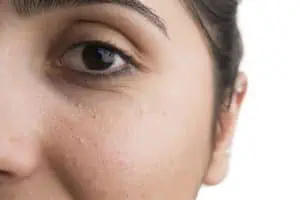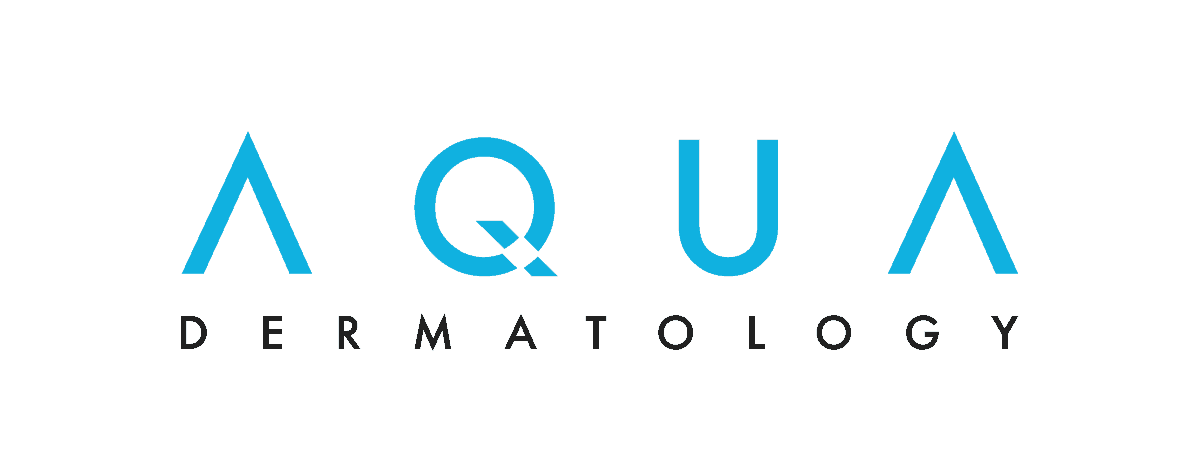
Medically reviewed By: Ted Schiff, MD
If you’ve noticed tiny white or yellow bumps on your face, you may have assumed they were whiteheads. But if the bumps are much firmer than whiteheads and aren’t inflamed, chances are you have milia. Since you can’t pop them like a pimple, the question is how to get rid of milia.
“Milia and acne are two different issues,” said Ted Schiff, MD, founder, and chief medical officer of Water’s Edge Dermatology. “Milia develop in very small hair follicles or in the sweat ducts in your skin, not in the pores.”Milia on the eyelid and other parts of the face such as the cheeks and nose are particularly common, though these pearl-like cysts can appear anywhere.
What causes milia?
Primary milia sometimes referred to as “milk spots,” form when a protein in skin cells called keratin becomes trapped under the top layer of skin.
“The skin is constantly exfoliating itself, shedding old skin cells and replacing them with new ones,” said Dr. Schiff. “But if some of the old skin cells don’t fall off, they can get trapped under new skin and harden.”
Primary milia is the most common type of milia in adults. It’s also common in newborns. Newborn milia typically appear on the face, scalp, and upper torso and heal on its own within a few weeks.
Another type of milia, called secondary milia, can happen when the skin heals after it’s injured or damaged by a blistering rash (such as a poison ivy rash), a burn, long-term use of steroid cream, or years of sun damage. Using products that are too heavy for your skin type can also cause secondary milia, which may be harder to treat than primary milia.
Get rid of milia: Treatments options
Milia often go away on their own within a few months, but sometimes they can persist for years. They are harmless, but if they bother you, seek professional help. Your dermatologist knows how to get rid of milia.
“People sometimes try to remove milia themselves by popping them as they would pimples,” said Dr. Schiff. “But milia have a very hard texture, and you can’t get rid of them without making an incision in the skin.” Trying to pop a milium (one cyst) can lead to scarring.
Another benefit of seeing a dermatologist: He or she can confirm that the cysts are milia and not something else, such as basal cell carcinoma, which can appear as white, pearly bumps.
Keep in mind that even most professional milia removal treatments carry some risk of scarring, so it’s important to weigh the risks and benefits with your dermatologist before proceeding. Here are the techniques a dermatologist may use.
De-roofing
The simplest way to remove milia is through de-roofing. The dermatologist cuts a tiny opening in the top of the cyst with a lancet and pushes out the keratin plug using a tool called a comedone extractor. You’ll feel a mild prick, nothing more. De-roofing is one of the safer milia removal options for people with dark skin, who are particularly vulnerable to developing dark patches known as post-inflammatory hyperpigmentation after certain skin treatments.
In most cases, de-roofing can be used to remove milia on the eyelid. “Occasionally, if they are large or numerous or close to the eyelid margin, we refer the patient to an ophthalmologist,” said Dr. Schiff.
Laser ablation
This is a milia removal option a dermatologist might choose if you have multiple milia. Laser energy is used to break down the trapped keratin and encourage it to be reabsorbed in the skin. Laser treatments may not be recommended for people with dark skin.
Chemical peel
A mild chemical peel can treat milia by removing the top layer of skin, revealing new, smooth skin. The skin care provider applies a solution containing glycolic acid or salicylic acid to exfoliate the affected skin. Pain relief usually isn’t necessary for mild peels, which cause only a slight stinging sensation.
Cryotherapy
In this less-common procedure, liquid nitrogen is applied to the milia. It freezes and destroys the cysts. You may experience swelling or blistering that disappears in a few days. This treatment may not be recommended if the milia are near the eyes, since the skin in the eye area is thin and delicate.
Tretinoin or oral antibiotics
Cases of a rare type of milia called milia en plaque, which appears as multiple milia on top of a raised red patch of skin, may go away with a prescription retinoid called tretinoin or an antibiotic called minocycline. Milia en plaque often occurs in people with an autoimmune condition or genetic skin condition such as discoid lupus or lichen planus.
Milia treatment at home
There are a few things you can do at home to encourage milia to go away and to avoid developing more of them.
Try using an exfoliating cleanser that contains salicylic acid, citric acid or glycolic acid once a week or more.
At-home chemical peels that contain salicylic acid or glycolic acid can also be helpful, but ask your dermatologist for advice on the best product to use. If you use one that’s too harsh for your skin, you could develop irritation or secondary milia.
Applying a prescription retinoid or over-the-counter retinol product once a day can help treat and prevent milia by speeding up cell turnover.
Finally, don’t forget to use sunscreen to protect your skin from burns and other sun damage that can lead to secondary milia.
Article Written By: Jessica Brown, a health and science writer/editor based in Nanuet, New York. She has written for Prevention magazine, jnj.com, BCRF.org, and many other outlets.





